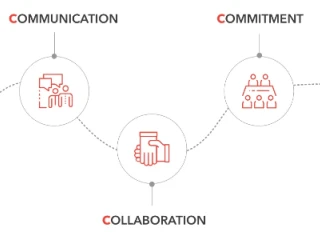Changing change management
In our current digital era, the importance of change management continues to rise. What’s more, digital transformation may even require new ways of supporting change management. According to McKinsey, the success rate of digital transformation journeys is lower than that of organizational transformations. Often because a clear vision about why new technologies are being introduced is lacking.
Furthermore, since digital transformation usually involves making big changes across multiple aspects of the business, conventional linear change management, with a beginning and an end, will no longer do the trick. This is why leaders must increasingly orchestrate transformation instead of ‘managing’ it. Orchestration involves mobilizing and enabling different resources in an organization using the power of networks to achieve transformation goals. The commitment of senior executives will thus become an even more crucial success factor.
Do you want to learn more about delaware’s experience in change management? Read our white paper, based on survey findings and the round-table debate, or simply get in touch and meet us over a cup of coffee.
/Changemanagement-Website-720x360-(1).webp?mode=autocrop&w=320&h=320&attachmenthistoryguid=da1ee537-bda0-4cff-8078-bdc53d9892a1&v=&focusX=333&focusY=198&c=4cd29c3e2d71813577f24b7dc96a8d273ebad676be99d2d2b3e63e370fa9d635)


/network-thinking-in-IT-720x360-(1).webp?mode=autocrop&w=320&h=240&attachmenthistoryguid=0ee213fa-eaa2-4de2-8d28-46dbc3dc854e&v=&c=4a709250a8dd0d600813fcf140fdd513c41240eeb9f365bd617d5a9f5e1af79d)